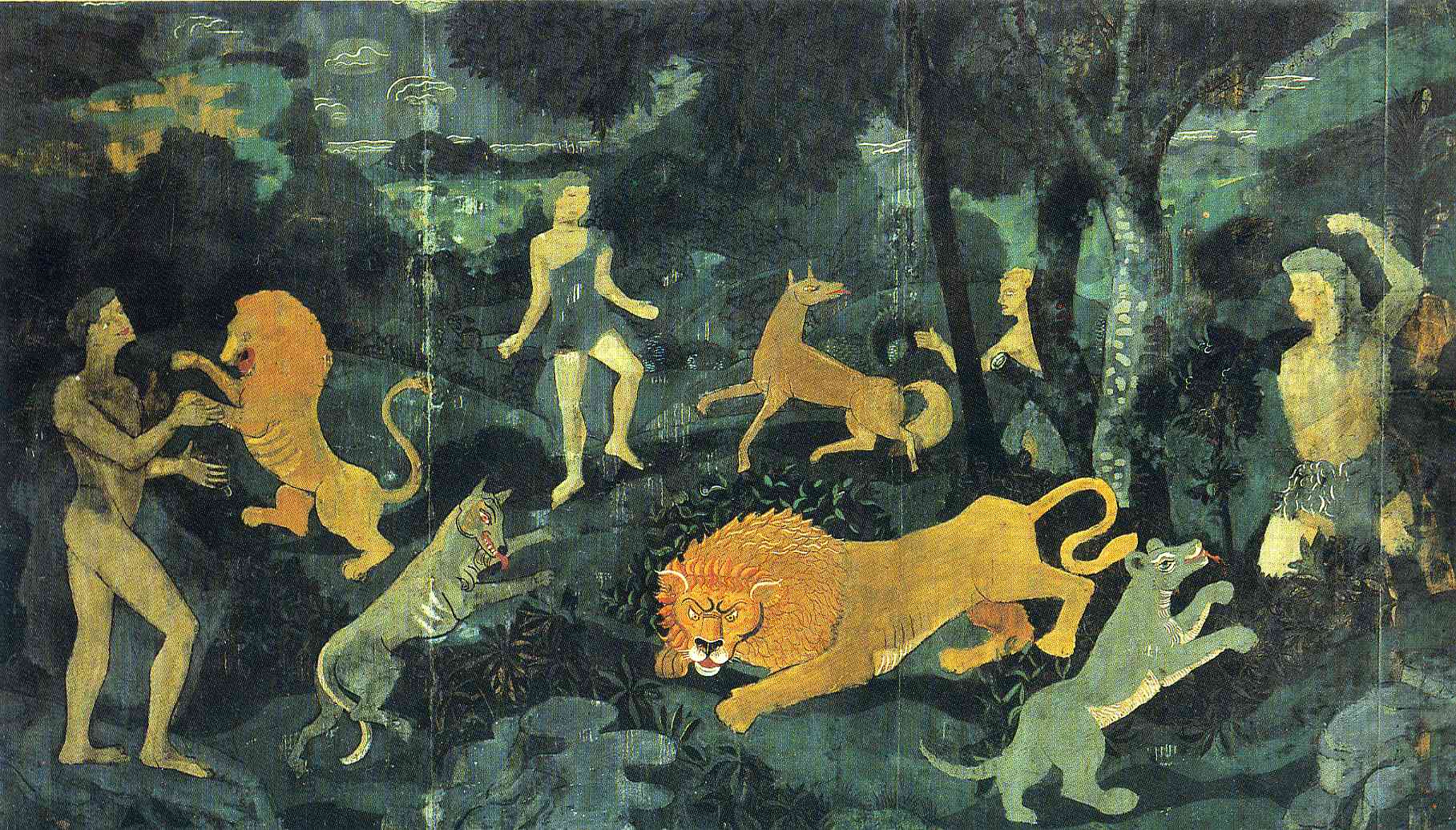André Derain, Golden Age, c1940
107.87 x 188.58 in.
André Derain (1880-1954) was a major French artist known for founding Fauvism with Henri Matisse. Derain was born just outside of Paris; in 1895 he began to study painting on his own. He studied to be an engineer, but took some painting classes during his studies at the Académie Camillo, where he met Matisse in 1898. In 1900 Derain met Maurice de Vlaminck with whom he shared a studio. It was eventually Matisse who convinced Derain's parents to allow him to abandon engineering to become a painter and Derain then attended the Académie Julian. His earliest works resemble Post-Impressionism, Cezanne in particular. In the summer of 1905, Derain and Matisse worked together in the south of France, painting the Mediterranean scenes. The intensely bright colors of their work caused a critic to derisively dub them "Les Fauves" (wild beasts) and the name stuck. Fauvism hit its stride in the following years, with Derain's time in London proving quite productive. After World War I Derain began to take a somewhat traditionalist, imbuing classical styles with modern aesthetics. One of his most famous paintings is Harlequin and Pierrot (1924) from this period. Golden Age is a very interesting painting, tending toward Primitivism. With the dark colors and shading, Derain created a very moody atmosphere. As the name Primitivism suggests, Derain was inspired by folk art, with the animals resembling traditional depictions. Such darkness was not uncommon in Derain's later works, which stand in sharp contrast to his Fauvist period. Whether because of the tragedy of witnessing two world wars, or simply a shift in viewpoint, Derain no longer saw the world in such heightened color, instead seeing the beauty in the brown and black places that seem to be so present in our world.

No comments:
Post a Comment